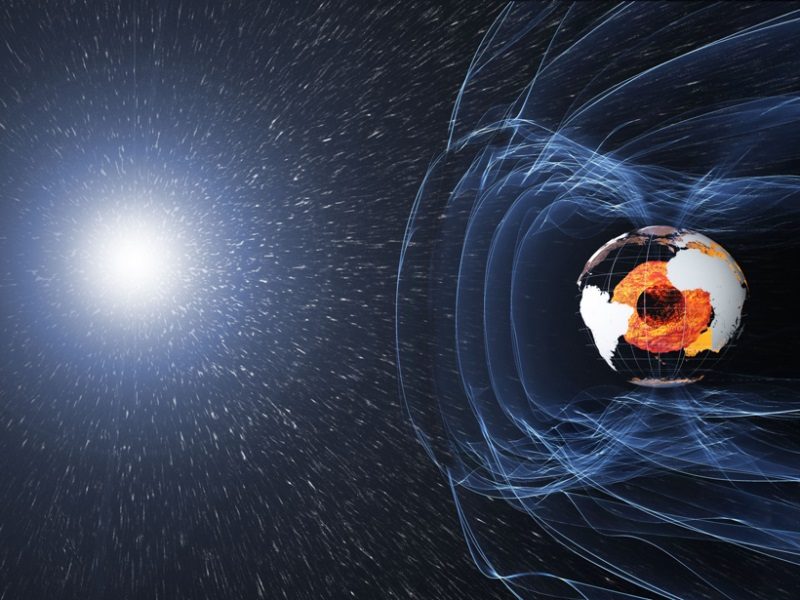
The Earth's magnetic fields extend to the ionosphere-a layer of plasma and neutral gases about 50-500 kilometers above Earth's surface-and the magnetosphere, which starts at the outer edges of the ionosphere and stretches many thousands of miles into space. Magnetic fields from Earth and the Sun affect the behavior of charged particles in the magnetosphere.
Earth's magnetic field is highly conductive and carries charged particles in a predictable fashion along field lines (giving rise to aptly titled field-aligned currents). Starting in the early 1900s, scientists conceptualized an exchange of energy and momentum between the solar wind (a stream of charged particles emitted by the Sun that flows throughout the solar system) and our planet's own magnetic field.
Since then, we have learned more about the distribution of field-aligned currents throughout the ionosphere. And, more recently, the Active Magnetosphere and Planetary Electrodynamics Response Experiment (AMPERE) satellite network has allowed scientists to study large-scale field-aligned currents in great detail, collecting data as often as every 10 minutes.
In a new publication, McGranaghan et al. combine data from AMPERE and a constellation of three European satellites known as Swarm to compile a data set of small-scale (up to about 150 kilometers wide), medium-scale (about 150-250 kilometers wide), and large-scale (wider than 250 kilometers) field-aligned currents.
The researchers found that many differences between small-scale and large-scale currents-such as their behavior, the dependence of their behavior on local time and solar wind conditions, and how closely their orientation aligns with that of the planet's magnetic field-are not straightforward. For example, they found that small-scale field-aligned currents potentially contribute a disproportionate amount of heat to regions of the ionosphere and thermosphere (an upper layer of Earth's atmosphere).
If future studies of field-aligned currents incorporate data from a variety of scales, scientists will be able to better understand the complexities of the space environment and the resolution needed to capture them. The researchers note that this better understanding, in combination with new and improved physics, has the potential to critically affect our understanding of the system at large. (Journal of Geophysical Research: Space Physics, https://doi.org/10.1002/2017JA024742, 2017)
Source: Journal of Geophysical Research: Space Physics



Alternatively part of the energy of the solar wind might be channelled down to the surface and the free electrons collected there. We would need a platform to house the chemical and our transmission equipment
It is rumored that Tesla had a plan to draw an electrical charge directly from the planet's magnetic field but I am unaware of the details which appear not to have survived. Drawing energy directly out of the ground would not be approved by the owning class as it would greatly diminish the global economy. Research would have to be outside the academic field under their control.